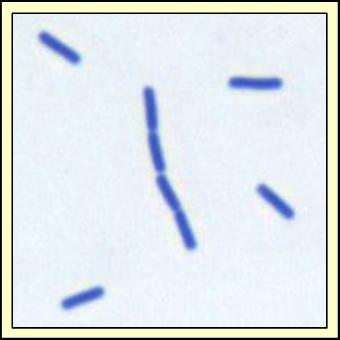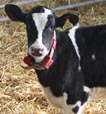Edinburgh/Yoghurt
From 2007.igem.org
| (54 intermediate revisions not shown) | |||
| Line 1: | Line 1: | ||
| - | |||
---- | ---- | ||
| - | [[Edinburgh | + | [[Image:Edinburgh Uni Logo.jpg|80 px]] |
| + | [[Edinburgh/Yoghurt| Introduction]] | [[Edinburgh/Yoghurt/Applications|Applications]] | [[Edinburgh/Yoghurt/Design|Design]] | [[Edinburgh/Yoghurt/Modelling|Modelling]] | [[Edinburgh/Yoghurt/Wet Lab|Wet Lab]] | [[Edinburgh/Yoghurt/Proof of concept|Proof of concept]] | [[Edinburgh/Future| Future Directions]] | [[Edinburgh/Yoghurt/References|References]] | ||
---- | ---- | ||
| - | + | {| style="background:#faf5ff ; border:1px solid #afa3bf; padding: 1em; margin: auto" | |
| + | |- | ||
| - | |||
| - | + | | <big><span style="color:black">'''Welcome to the self-flavouring yogurt project'''</span></big> | |
| + | |||
| + | <big><span style="color:#708090">''The aim of this project is not only to produce colourful, tasty yoghurt, but to demostrate it is possible to introduce BioBricks into gram positive organisms.'' | ||
| + | </span></big> | ||
| + | |||
| + | |||
| + | We chose to produce 'self-flavouring' yoghurt, as this project enables us to genetically manipulate a range of gram positive bacteria required for yoghurt formation (see yoghurt production, below). | ||
| + | |||
| + | [[Image:Bacillus subtilis.jpg|thumb|Bacillus subtilis|150 px]] | ||
| + | |||
| + | There are several advantages for using genetically engineered gram positive bacteria, over the traditionally used ''E. coli''. | ||
| + | |||
| + | * Some Gram positive organisms (eg ''Lactobacillus, Lactococcus'') are food grade, and therefore may be ingested. ''Lactobacillus'' are alsp common and harmless (indeed, beneficial) components of the human gut flora. Potentially this could enable their use in a range of products from medicines to milk shakes or yoghurt to deliver beneficial molecules to the body. Of course, there are also regulatory issues related to consumption of genetically modified organisms, but these will be more easily addressed in a known-harmless host with a long history of safe food use. | ||
| + | |||
| + | |||
| + | * Several gram positive bacteria, such as ''Bacillus spp.'' are able to form hardy endspores, which are extremely tolerant of heat, drying and other stresses, and can survive for centuries. These do not require refrigeration and can be transported and used in very hot, cold or developing countries cheaply and with ease. | ||
| + | |||
| + | |||
| + | * Gram positive organisms, such as the lactic acid bacteria, are much more efficient at secreting proteins and other molecules into their surrounding media than ''E. coli''; most strains of ''E. coli'' lack the Main Terminal Branch of the General Secretory Pathway and secrete only a few proteins using specific mechanisms such as ABC transporters (eg, for hemolysin) and Type 3 Secretion Systems (in pathogenic strains). | ||
| + | |} | ||
| + | |||
| + | |||
| + | {|style="background:#fffaf5; border:1px solid #CFB53B; padding: 1em; margin: auto" | ||
| + | |- | ||
| + | | | ||
| + | |||
| + | ====Yoghurt Production==== | ||
| + | [[Image:Cow.jpg|thumb|The cow - an indirect producer of yoghurt]] | ||
| + | |||
| + | Traditionally making yoghurt was a method used to preserve milk for longer, as the fermentation culture used lowered the pH of the yoghurt, which inhibited the growth of food spoiling, not to mention potentially hazardous, micro-organisms. | ||
| + | |||
| + | Yoghurt is produced by introducing lactic acid bacteria (LAB) into milk (these include the legally required strains ''Lactobacillus delbrueckii subsp. bulgaricus'' and ''Streptococcus salivarius subsp. thermophilus''). LAB then partially digest the casein proteins within the milk and metabolise lactose to lactic acid, leading to a decrease in pH (to around pH4.5), causing the casein proteins to gel together and form yoghurt. | ||
| + | |||
| + | |||
| + | [[Image:Yoghurt.jpg|left|thumb| some yummy yoghurt to feast your eyes on ]] | ||
| + | |||
| + | |||
| + | Today yoghurt has many reported health benefits. For example, the inclusion of ''Bifidobacterium'', | ||
| + | ''Lactobacillus acidophilus'' and ''Lactobacillus casei'' in the yoghurt starter culture, creates a probiotic - a dietary supplement that contains several potentially beneficial bacteria, which may help replenish the body's natural gut flora. | ||
| + | |||
| + | Yoghurt may also be enjoyed by many lactose intolerant people, as the enzymes released by the LAB are thought to aid digestion of lactose within the gut. | ||
| + | |||
| + | |||
| + | More information about yoghurt may be found at [http://en.wikipedia.org/wiki/Yogurt wikipedia] | ||
| + | |||
| + | |} | ||
| + | |||
| + | ---- | ||
| + | [[Edinburgh/Yoghurt| Introduction]] | [[Edinburgh/Yoghurt/Applications|Applications]] | [[Edinburgh/Yoghurt/Design|Design]] | [[Edinburgh/Yoghurt/Modelling|Modelling]] | [[Edinburgh/Yoghurt/Wet Lab|Wet Lab]] | [[Edinburgh/Yoghurt/Proof of concept|Proof of concept]] | [[Edinburgh/Future| Future Directions]] | [[Edinburgh/Yoghurt/References|References]] | ||
---- | ---- | ||
<!--==Application== | <!--==Application== | ||
| - | There are many advantages for genetically modifying bacteria and other micro-organisms that are normally present in our food. These include increasing the number of beneficial vitamins, carotenoids and other co-factors, which may be rare in some peoples diet, such as those people suffering from malnutrition in developing countries. | + | There are many potential advantages for genetically modifying bacteria and other micro-organisms that are normally present in our food. These include increasing the number of beneficial vitamins, carotenoids and other co-factors, which may be rare in some peoples diet, such as those people suffering from malnutrition in developing countries. |
Other uses include the manufacture of medicines in the small intestine, which cannot survive in the gut, or biotechnological applications such as the production of naturally synthetic colours and flavours. | Other uses include the manufacture of medicines in the small intestine, which cannot survive in the gut, or biotechnological applications such as the production of naturally synthetic colours and flavours. | ||
Latest revision as of 23:33, 26 October 2007
 Introduction | Applications | Design | Modelling | Wet Lab | Proof of concept | Future Directions | References
Introduction | Applications | Design | Modelling | Wet Lab | Proof of concept | Future Directions | References
| Welcome to the self-flavouring yogurt project
There are several advantages for using genetically engineered gram positive bacteria, over the traditionally used E. coli.
|
Yoghurt ProductionTraditionally making yoghurt was a method used to preserve milk for longer, as the fermentation culture used lowered the pH of the yoghurt, which inhibited the growth of food spoiling, not to mention potentially hazardous, micro-organisms. Yoghurt is produced by introducing lactic acid bacteria (LAB) into milk (these include the legally required strains Lactobacillus delbrueckii subsp. bulgaricus and Streptococcus salivarius subsp. thermophilus). LAB then partially digest the casein proteins within the milk and metabolise lactose to lactic acid, leading to a decrease in pH (to around pH4.5), causing the casein proteins to gel together and form yoghurt.
Yoghurt may also be enjoyed by many lactose intolerant people, as the enzymes released by the LAB are thought to aid digestion of lactose within the gut.
|
Introduction | Applications | Design | Modelling | Wet Lab | Proof of concept | Future Directions | References


